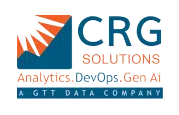Online experience along with user interaction is the key priority of any business in the present world. In fact, all industries are incorporating the most modern instruments to make sure their clients are happy. One of the more efficient methods to accomplish this end goal is to use embedded analytics. By bringing enhanced analytical capabilities to the core applications, organizations can enable users with services that are driven, experiences that are tailored and quite unlike any other and view all this as a process that fits together on its own.
So, what Is Embedded Analytics?
Embedded analytics is the compilation of features and tools, including dashboards, reports, graphs and data representation capabilities into a company’s particular database management tool, so that they can be accessed at ease. Instead of requiring users to switch to standalone analytics platforms, embedded analytics ensures that insights are readily accessible within the workflow, creating a more seamless user experience.
Key Ways Embedded Analytics Enhances CX and Engagement
Personalized Customer Interactions
In simple words, it can be defined as the delivery of real-time tailored experiences by factoring in the individual clients’ environments. By the deployment of arising technologies such as machine learning robots and predictive algorithms, businesses can now offer their clients what they want.
For example: The system of services like Netflix and smart devices use embedded analytic capability to assess the viewing behaviour and consequently recommend shows or films that are known to address the preference of the user. Thus, this personal approach is able to engage the customers to the technology.
Technical Perspective: Recommendation engines can be built by integrating predictive analytics models and user data pipelines, which adhere to collaborative filtering or content-based filtering. More often, these engines leverage other tools such as Apache Kafka for data streaming and TensorFlow for machine learning.
Real-Time Insights for Faster Decision Making
One of the most powerful features of embedded analytics, is the delivery of real-time information. This enables customers and employees to make decisions quickly and with high accuracy.
For example: Businesses in the E-commerce or M-commerce industry integrate real-time data to assess inventories and pricing of items. This is displayed prominently to the customers showing them when the delivery will be done or how much of the product is left in stock during checkout and any applicable dynamic changes in pricing.
Technical Perspective: Real-time analytics is achieved through stream processing frameworks like Apache Flink or Spark Streaming, which process large volumes of data in near real-time. These insights are then displayed through interactive dashboards built using tools like Tableau or Power BI.
Enhancing Self-Service Capabilities
Self-service is designed in such a way that each of the users can access the information that is suitable in a way that reduces the amount of work that is required from a support team. This kind of data access allows people to look for data, prepare data, and search for answers on their own.
For example: Mobile phone applications related to banks incorporate embedded analysis for the purpose of understanding the spending patterns, categorize habits and set savings goals. In this case, financial planning tools not only increase customer experience but also drive user engagement.
Technical Perspective: Basic technology of self-service analytics includes advanced components such as easier navigation and drillable reports and query building through drag and drop as well as methods like natural language processing. For instance, modern software for self-service analytics like Looker or QlikSense makes it easier to on-board through the availability of embeddable interfaces.
Proactive Issue Resolution
Another issue that arises can be proactive issue resolution, which enables the business to see a problem, understand it, and solve it before the customer is aware of it. This technology allows the company to anticipate bottlenecks by analyzing historical information and observing ongoing trends.
For example: A SaaS provider integrating its application for the analytics purposes related to the usage where hypothetically, a drop in application usage by the users may indicate a drop in active users of the application, will in turn lead to such occurrence. In such a scenario, an organization’s customer success team, proactive in nature, analytically engages the users at risk and those triggering the issue pre-emptively.
Technical Perspective: Proactive issue resolution is powered by anomaly detection algorithms and predictive models. Tools like Python’s scikit-learn or Azure Machine Learning can be used to train these models, while alerts are triggered via APIs.
Building Trust Through Transparency
Customers value transparency, and embedded analytics helps build that trust by providing clear and actionable insights. Businesses can share performance metrics, delivery timelines or service statuses with their customers in a transparent manner.
For example: Food delivery apps provide real-time order tracking and delivery time estimates through embedded analytics, enhancing customer trust and satisfaction.
Technical Perspective: It requires syntactical analysis at a lower level with the map coordinate services like Google Maps API and at a higher level with real time business data streams.
Benefits of Embedded Analytics for Enterprises
- Greater levels of Customer Retention: Customers tend to stick around when they get a more personal touch.
- Increased Engagement: Rich, engaging and interactive access to data helps keep people interested.
- Increased Efficiency of Operations: Process cycle times are reduced by introducing mechanized procedures.
- Possibilities of Data Monetization: Organizations can also consider monetizing data by offering it as a service.
Challenges in Implementing Embedded Analytics
- Data Integration: It is challenging to combine data obtained from a number of sources into one platform.
- Performance: Performance can be a major obstacle to insight generation, especially if the application performance is not optimized for the purpose.
- User Training: Ensuring that end-users understand how to leverage analytics effectively.
Solution:
To address these challenges, organizations can leverage modern cloud-based platforms like Snowflake or AWS Redshift for seamless data integration and scalability. Additionally, offering intuitive user interfaces and comprehensive training programs ensures smooth adoption.



